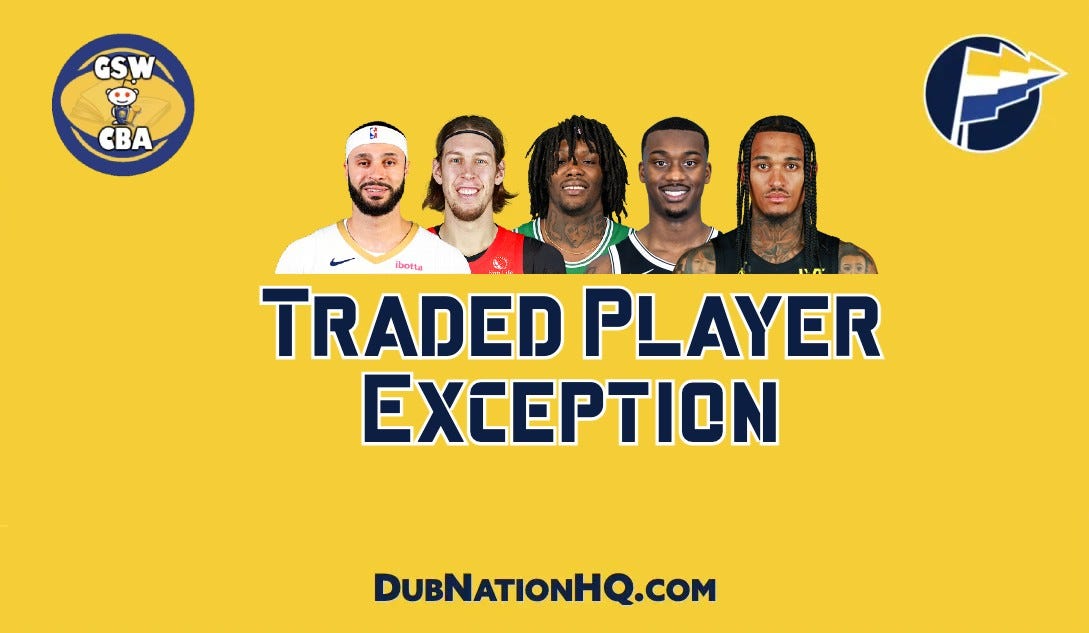Explaining the Warriors new Traded Player Exception and players to target, by Perks
Klay Thompson left Dub Nation a little parting gift
The index for all DNHQ Free Agency Coverage is here.
The Bay Area got their July off to a cold start with the news of a beloved franchise legend departing the Warriors and unceremoniously closing the final chapter on the Big 3 of a storied dynasty with a timeless legacy. Perhaps it’s too soon to get into eulogies before reality truly sets in and at any r…
Keep reading with a 7-day free trial
Subscribe to Dub Nation HQ to keep reading this post and get 7 days of free access to the full post archives.



